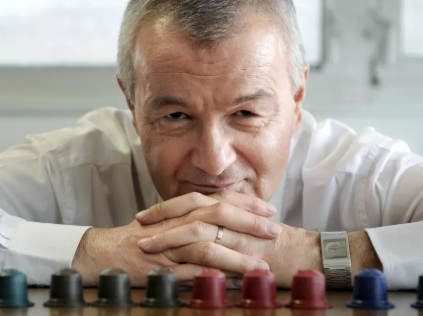Every generation has its own anxieties around coffee.
每一代人都有他們自己的咖啡焦慮。
In the 16th century, the governor of Mecca feared it would encourage his citizens to overthrow him.
在16世紀,麥加的統治者擔心咖啡會鼓勵他的公民推翻他。
At the dawn of the 17th century, Pope Clement VIII declared it to be “the devil’s drink”.
17世紀初,教皇克萊門特八世宣稱它是“魔鬼的飲料”。
Some decades later, in London, women petitioned against coffee houses, claiming it made their husbands impotent.
幾十年后,在倫敦,婦女們對咖啡屋提起訴訟,聲稱它使她們的丈夫陽痿。
These days we are less worried about what coffee does to us, especially with widely available decaffeinated options,
如今,我們不怎么擔心咖啡對我們的影響,由其是人們有很多脫咖啡因的選擇,
and more worried about what coffee does to the world.
我們更擔心咖啡對這個世界的影響。
In the past decade, consumers have grown increasingly concerned about the sheer amount of waste caused by coffee pods.
在過去的十年,消費者越來越擔心咖啡膠囊帶來的大量廢物。
Halo, a firm which makes compostable pods, estimates that of the 39,000 pods made every minute, 29,000 will end up in landfill.
哈羅是一家制造可用作堆肥的咖啡膠囊的公司,他們估計,在每分鐘制造的39000個咖啡膠囊中,29000個將會去到廢物填埋場。
In 2016, the city of Hamburg introduced a ban on buying coffee pods with council money, as part of a crackdown on “polluting products”.
2016年,漢堡市實施了一項禁止使用議會資金購買咖啡膠囊的禁令,這是一次嚴厲打擊“污染產品”的行動的一部分。
(It did not stop the Nespresso boutique in the city centre from doing a brisk trade.)
(這并沒有阻止位于市中心的奈斯派索精品店生意興隆。)
Nespresso uses aluminium because it is light, strong and durable,
奈斯派索之所以使用鋁是因為它輕便、堅固、耐用,
making it the best material for a sealed container that must be flown around the world
這使它成為制造必須空運到世界各地,
and then subjected to extreme heat and pressure on someone’s kitchen counter.
然后在別人的廚房臺面上經受高溫和高壓的密封容器的最佳材料,
Only a tiny amount of coffee is used in each pod,
每個咖啡膠囊只需很少量的咖啡,
so less coffee is wasted than in a cafetiere, or with other methods, in which many grams can be used per cup.
所以,這比使用咖啡壺或者其他方式浪費的咖啡要少,每杯咖啡可以用很多克。
And the pods are, in theory, 100% recyclable.
這些咖啡膠囊理論上是100%可回收的。
But because they contain plastic as well as aluminium, they can’t just be dropped in a regular recycling bin.
但因為它們含有塑料和鋁,所以不能直接扔進普通的垃圾桶。

Instead, used capsules must be dropped off at Nespresso boutiques or some convenience stores;
相反,用過的膠囊必須得送到奈斯派索精品店或一些便利店;
in some countries, Nespresso offers a service that collects them from customers’ homes.
在一些國家,奈斯派索還提供從顧客家中收集咖啡膠囊的服務。
Unlike plastic, used by many of Nespresso’s rivals, aluminium is 100% recyclable,
不像奈斯派索的競爭對手所使用的塑料,鋁是100%可回收的,
but there is a big difference between offering recycling facilities and getting consumers to use them.
但是,提供回收設施和讓消費者使用它們之間有很大的區別。
Nespresso says its global recycling rate is 30%, and that 91% of its users have access to one of its 100,000 collection points around the world.
奈斯派索稱其在全球的膠囊回收率為30%,91%的用戶可以使用其遍布全球的10萬個回收點中的一個。
But some experts have suggested that just 5% of Nespresso pods are recycled.
但是一些專家稱,只有5%的咖啡膠囊被回收了。
Even if Nespresso’s figure is accurate, with a conservative estimate of 14bn capsules being sold each year,
即使奈斯派索的數據是準確的,據保守估計,每年咖啡膠囊的銷量是140億,
and 0.9 grams of aluminium per capsule, that means 12,600 tonnes of Nespresso aluminium end up in landfill annually, enough for 60 Statues of Liberty.
每個咖啡膠囊含有0.9克的鋁,即每年有12600噸的鋁最終會去到廢物填埋場,這些鋁足夠建造60座自由女神像。


